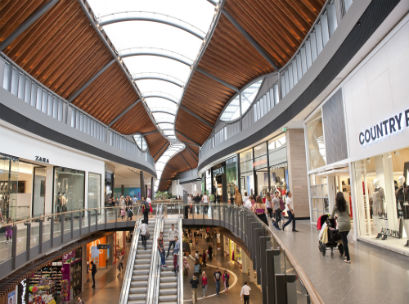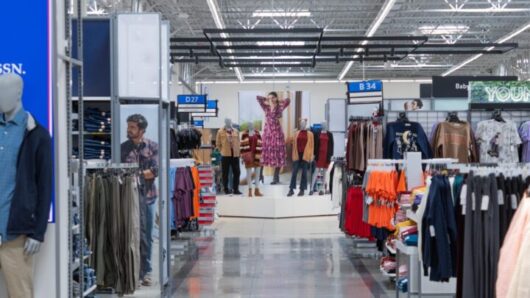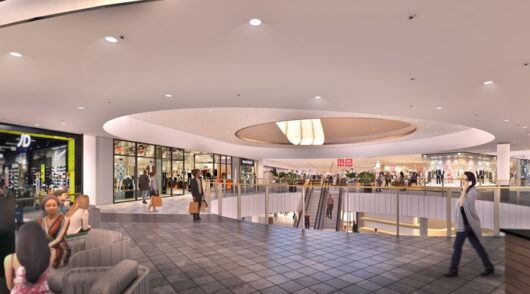 Sales for the early months of 2018 have been encouraging for major shopping centre owners, with retailers faring above expectations after the flat Christmas period.
Sales for the early months of 2018 have been encouraging for major shopping centre owners, with retailers faring above expectations after the flat Christmas period.
The results were assisted by a summer period that, unlike some previous years, were not dramatically affected by nature’s wrath in the form of widespread flooding, bushfires or hurricanes.
Sales for the first three months were also bolstered by an early Easter, however, they were still more promising than expected in the light of the continuation of challenging retail conditions mentioned in most announcements by retailers reporting their first half financial results.
A number of those announcements included substantial writedowns on accounts and, consequently, sharp profit falls.
Most of the writedowns by retailers were non-cash provisions against their goodwill and asset valuations, which variously reflected restructuring, indifferent trading performances, bloated goodwill calculations and changing retail dynamics.
While acknowledging consumer confidence and spending remains subdued, shopping centre landlords have been quite optimistic about short term results across their retail portfolios and remain confident about longer term performance.
The Australian shopping centre industry is mature and has been buffered by reinvestment in centres, however, the industry will need to adjust to a changing retail market in the same way as their retail tenants.
The short term results remain buoyant thanks to the tail in leases, revenues generated by some centre expansion and refurbishment projects and, in the prime centres, the addition of international retail brands.
However, the future outlook is likely to be a lot more challenging as retail chains rightsize their store networks, the goldrush of international retailers slows, and online retailers continue to capture consumer spending.
The evolution of the big box shopping centres from their original furniture, electrical goods and floorcovering traders to a broader mix of retailers, including sports goods, pharmacy, entertainment and even babywear is also stealing sales growth and diminishing the pulling power of the destination store anchors om the malls.
Similarly, the expansion of Costco and the roll out of Kaufland stores are hitting the traditional anchors that have historically driven customer traffic through shopping centres.
Cutting or downsizing?
Shopping centres have already seen the closure of some anchors and mini majors, including the exit of Myer department stores.
Further Myer closures are expected in the next two to three years and other anchors under threat include Target, Harris Scarfe, Big W stores and perhaps even some of the international brands given Zara’s expressed dissatisfaction with its Pacific Fair store earlier this year.
Obvious potential departures from shopping centres are the struggling retailers, however, it is worth considering the fact that a retailer like JB Hi-Fi could potentially quit some of its mall locations because it no longer strategically needs them to defend market share.
JB Hi-Fi is becoming increasingly cramped in shopping centre locations, especially where it has adopted its Home store formats and it now has more options for standalone stores in big box centres and even highway showroom locations.
Along with Bunnings Warehouse, JB Hi-fi is one of the strongest retail brands and most successful retailers in Australia.
Shopping centres need JB Hi-Fi as an anchor that generates customer traffic but it is not so certain that JB Hi-Fi any longer needs shopping centres.
Added to the possible departure or downsizing of some of retailers that occupy large floorspaces, shopping centre owners are facing the prospect of a large number of store closures by chains that can no longer afford to carry stores that are not generating a bottom line profit.
The days of expansion for expansion sake and for rolling out new stores to build market share and increase buying power are gone, occupancy and store staffing costs have completely changed the equation.
As a result, retailers are closing underperforming and unprofitable stores or seeking substantial reductions in rents if they are to remain in centres.
In some centres, shopping centre owners are allowing tenants to remain on a percentage of sales rent in order to keep them from quitting the centre.
The days of long waiting lists of prospective tenants to fill vacancies where an existing tenant fails or exits are a faded memory for all but the very best shopping centres.
The influx of international retail brands plugged some holes created by the financial collapses of some existing tenants but that queue is also much shorter now and, again, the occupancy cost expectations are much lower for the retailers than the landlords.
Well-publicised moves by high profile chains looking for lower rents means that any retailer in a shopping centre who doesn’t press for a better deal on a lease renewal, if not midterm on a lease, is mad or aware that the shopping centre would prefer to see them move on.
New drawcards
Historically, department stores were the major anchor for shopping centres, the drawcard favoured by low rents and prime positions.
Today, Myer and David Jones have declining sales and an uncertain future, leaving supermarkets, struggling discount department store chains, food courts and cinemas to attract customer traffic.
Some retail analysts are no longer convinced that food courts are all that effective in the traffic generator role and landlords are certainly seeing a reduced interest in tenancies from many fast food brands, particularly those in franchise systems who are struggling to make the economics work.
Shopping centre owners and commentators predict a significant change in shopping centres into the future with the introduction of more entertainment uses, potentially motor vehicle sales showrooms, restaurants, offices, hotels, medical and service uses and, in some cases, residential tenancies.
The change of uses is obviously achievable, however, most of those types of tenants will not pay the same rent and occupancy charges that retailers pay for the same space.
The shopping centres may be able to keep their floorspace full but the level of rental income will be lower and potentially servicing costs may not be fully recouped.
While the major shopping centre owners are confident they can continue to remix their centres to generate income growth and to continue to draw customers, their best days are arguably behind them.
The future looks much more challenging with an inevitable recalibration of rents and occupancy charges and a reckoning on asset values for a number of centres, which calculate the value of the asset on rents set out in leases that are not being realised as a result of concessions, rent holidays and side deals on fitouts and other incentives for tenants.
Just as retailers have had to face up to reality and trim their goodwill and asset valuations, shopping centre owners will be confronted by the same imperative as rents find their level in the new retail dynamic.





